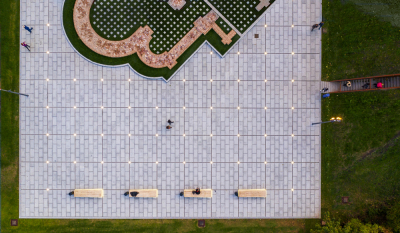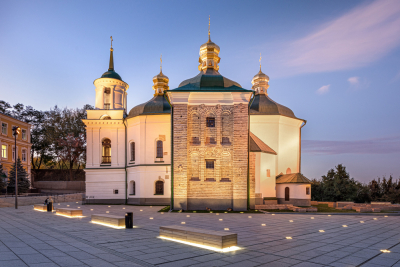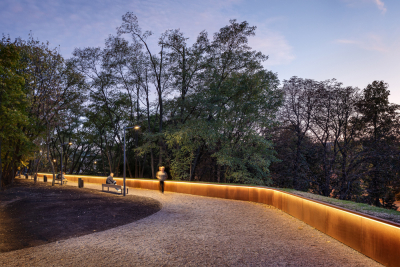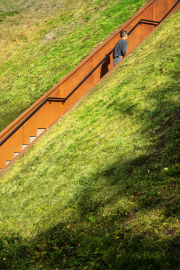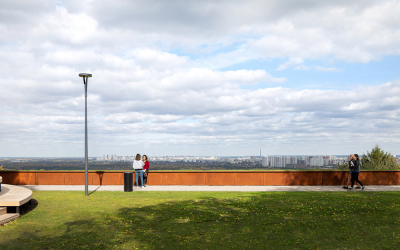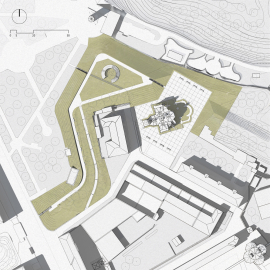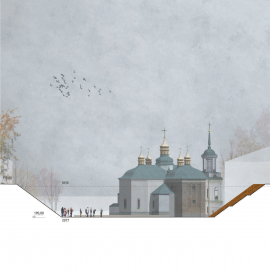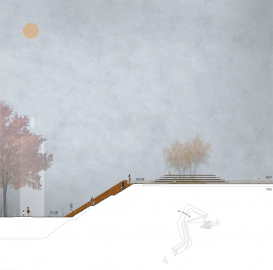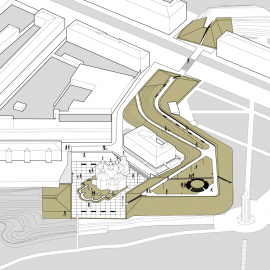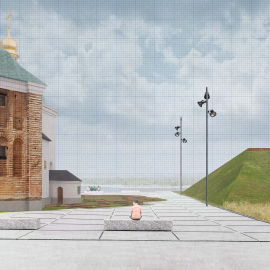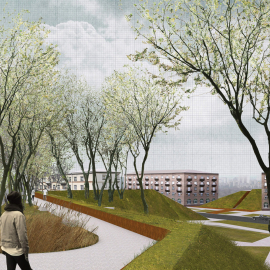Renovation of the Spassky Bastion and Church Public Square
The new landscape connects the Church of the Savior on Berestove (XII c) with the adjacent bastion of the Pechersk fortress (XVIII c). The vicinity of two monuments was controversial. Rainwater from the rampant flooded the church. The archaeological research of the church dug up a part of the rampart. The conflict had to be settled through landscape design
The project consists of the stone-clad urban square surrounding the church and a small park atop of the bastion.
The square around the church had no visitors except for a few pilgrims. The bastion, on the other hand, was quite a popular sightseeing viewpoint visited mostly by car. Being completely unsuitable for vehicle traffic, the rampart suffered greatly from the traffic. The new design denies access to the bastion by car. To facilitate the access for pedestrians three new sets of stairs were constructed.
Much of the space around the church has been liberated from sporadic overgrowth. The anthropogenic appearance of the rampant is restored by sharpening the edges of the hills. A bigger square is cut out of the bastion which finally fixes the stormwater flows and grants the church the space that it deserves.
The bastion itself is a giant earth sculpture. This design highlights the man-made form of the rampant by covering the parapet placed along the border of the former fortification in alloy steel. The position and height of the parapet mimics the previously existing bulwark - a wall on which the cannonry used to be placed. To this metal backbone, three new stairs are attached. Stairs are carved into the slope in order to not spoil the continuity of the green slope on the outer surface of the bastion. In turn, what interrupts the continuity of the earth rampant is the new church square.
The materials used are all neutral colors with the exception of alloy steel used to identify the cuts made in the body of the bastion.
At night the main source of light in the square is the church itself, all lighting is directed at it. From its walls, light is reflected onto the square. There are also decorative lights built-in the grey granite pavement. The cross-shaped lights are a homage to the long-forgotten function of the site around the church - a graveyard.
The parapet line running along the entire bastion is highlighted to emphasize the contour of the rampant in the dark. The interior rusty walls of the stairs are washed with light hidden in the border of the metal panels.

